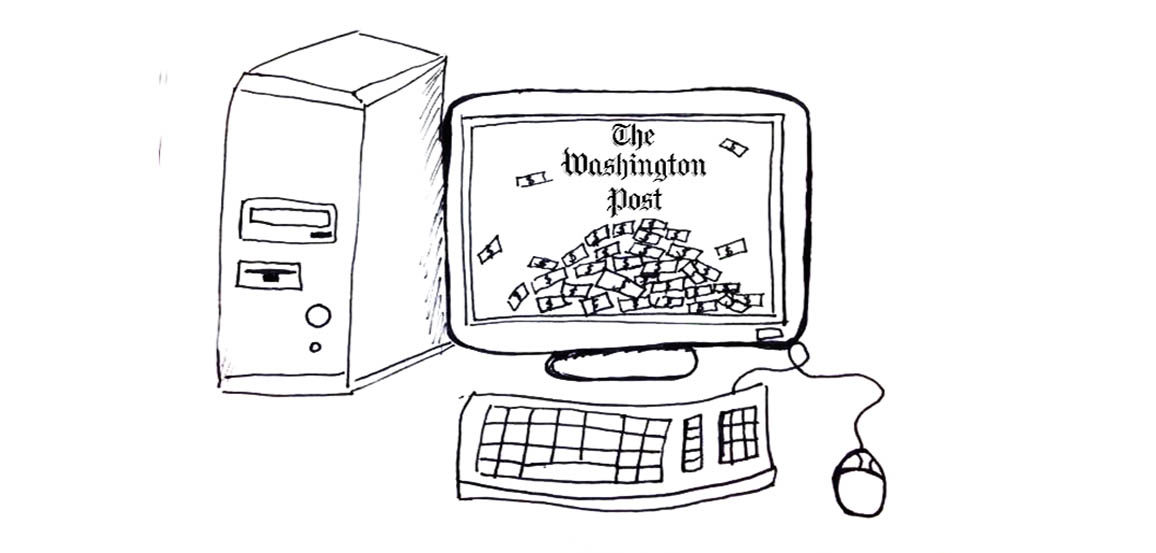
“If you talk about what used to be, we’re going to be what used to be.”
That’s what Martin Baron, executive editor of the Washington Post, tells his staff.
Last week, the Canadian Journalism Foundation held its last talk of the year at Ryerson University, where the National Post’s Anne Marie Owens interviewed Baron about the Washington Post’s digital transformation. So far, Baron’s plans seemed to have worked. More people accessed the Washington Post’s website in October than The New York Times—and that’s saying something.
Baron’s arrival isn’t the only thing that sparked a move towards digital, though. Amazon founder Jeff Bezos bought the Washington Post in 2013, giving the paper time and money to experiment with digital products, sparking a series of changes in the Washington Post’s daily operations.
1. Change in the newsroom:
Baron says the Washington Post took a lot of steps to create a digital culture in the newsroom. Some of those were physical, like trying out new seating arrangements in the newsroom; others had a lot more to do with mindset. “Everyone is our competition,” Baron said. That means anything on the web, not just news organizations. Baron says he only spends 10 minutes talking about the newspaper in his daily afternoon meetings; the rest is spent on online content.
But where does all this online content come from?
2. What happens at night:
A group of young journalists spend their nights at the Post every day. From 10 p.m. to 6 a.m., they’re looking for stories in the nooks and crannies of the internet. By the time morning comes, these stories have already been posted, and they often become the basis for a bigger story.
Often, the staff will have found someone who wants to tell their story, but instead of sending a reporter out to cover that story, they’ll work with the writer to edit and vet the story until it’s ready for publication. Then, they’ll slap on a headline like “This is what happened when I drove my Mercedes to pick up food stamps.” Sometimes, those stories lead to deeper investigations. A story from a Bill Cosby accuser, for example, led a team at the Post into a 10-day investigation.
3. Wheels on luggage:
To Baron, none of this is salvation. “I remember when the tablet was supposed to save the industry,” he said. “We need to get past the idea that this one thing is going to save the industry.”
Instead, Baron wants to focus on the “wheels on luggage”. Yes, we’ve put a man on the moon, he says, but we put wheels on luggage—and only one of those things affected people’s experiences. That’s what he wants to do: he wants to focus on the smaller details like the video or graphic that adds a little more to the story. But there’s always resistance and mourning in the newsroom. Resistance to the new stuff and mourning for what’s gone or what could soon be lost.
What’s missing? “Customer or readers?” Owens asks. Baron says he’s gotten flak for using “customers,” but to him, they’re the same.
Throughout the talk, Baron seemed more like a businessman than anything. That’s not necessarily a bad thing; it’s just something to think about.
About the author
Carine is the senior online editor of the spring 2016 issue of the Ryerson Review of Journalism.
